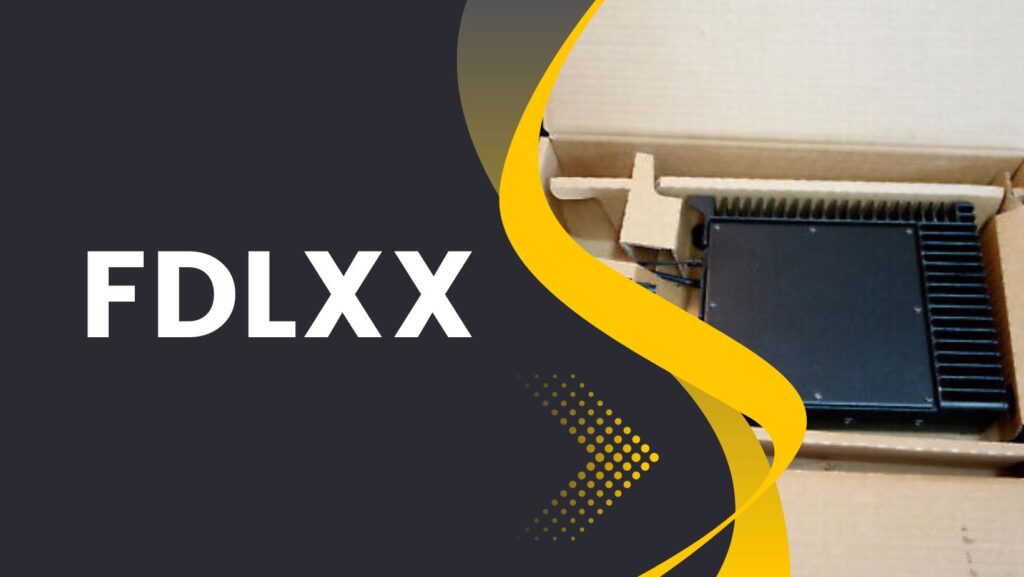Introduction: Understanding “fdlxx” might seem daunting at first, but it’s a fascinating and critical subject in today’s fast-paced technological world. This article aims to demystify fdlxx, exploring its history, applications, benefits, challenges, and much more. By the end, you’ll have a comprehensive grasp of what fdlxx is all about and how it can be implemented effectively.
History of fdlxx
fdlxx has a rich history that dates back several decades. It started as a niche concept but quickly gained traction as its potential became apparent. Initially used in specialized fields, fdlxx has evolved into a versatile tool utilized across various industries.
Key Milestones in fdlxx Development
Some significant milestones in the development of fdlxx include the introduction of its core algorithms, the expansion into different sectors, and the continuous improvements in its functionality and efficiency.
Components of fdlxx
Core Elements
The core elements of fdlxx include its foundational algorithms, data processing techniques, and integration capabilities. These elements work together to deliver the powerful functionalities that fdlxx is known for.
Supporting Features
In addition to its core elements, fdlxx boasts several supporting features such as user-friendly interfaces, robust security measures, and scalable architectures.
Applications of fdlxx
In Technology
fdlxx is widely used in the tech industry for various purposes, including data analysis, software development, and system optimization. Its ability to handle large datasets and complex processes makes it invaluable.
In Healthcare
In healthcare, fdlxx aids in patient data management, medical research, and the development of advanced diagnostic tools. Its implementation has led to significant improvements in treatment outcomes and operational efficiency.
In Education
fdlxx has transformed the educational landscape by enabling personalized learning experiences, enhancing administrative processes, and supporting innovative teaching methods.
Benefits of fdlxx
Efficiency Improvements
One of the primary benefits of fdlxx is its ability to streamline processes, reducing the time and effort required to achieve desired outcomes.
Cost Reduction
By automating tasks and improving accuracy, fdlxx helps organizations cut costs significantly. This cost-efficiency is a major driver behind its widespread adoption.
Enhanced User Experience
fdlxx enhances user experiences by providing intuitive interfaces, reducing errors, and ensuring reliable performance.
Challenges of fdlxx
Technical Difficulties
Despite its many benefits, implementing fdlxx can present technical challenges, particularly in terms of integration with existing systems and ensuring compatibility with various platforms.
Adoption Barriers
Resistance to change is another common challenge, as organizations and individuals may be hesitant to adopt new technologies.
Regulatory Issues
Compliance with regulatory standards is crucial, and navigating the legal landscape can be complex and time-consuming.
Future of fdlxx
Emerging Trends
The future of fdlxx’s looks promising, with emerging trends such as AI integration, enhanced machine learning capabilities, and increased automation.
Potential Innovations
Potential innovations in fdlxx’s include more advanced predictive analytics, improved user interfaces, and expanded applications across different sectors.
Case Studies
Successful Implementations
Several organizations have successfully implemented fdlxx’s, achieving remarkable results. These case studies provide valuable insights into best practices and effective strategies.
Lessons Learned
Lessons learned from these implementations highlight the importance of thorough planning, ongoing support, and continuous improvement.
Expert Opinions
Insights from Industry Leaders
Industry leaders provide valuable insights into the current state of fdlxx’s and its future prospects. Their perspectives shed light on the potential impact of ongoing developments.
Predictions for the Future
Experts predict that fdlxx’s will continue to evolve, becoming even more integral to various industries and driving significant advancements.
How to Implement fdlxx in Your Organization
Step-by-Step Guide
Implementing fdlxx’s in your organization involves several key steps, including assessing your needs, selecting the right tools, and ensuring proper training for your team.
Best Practices
Best practices for implementing fdlxx’s include starting with a pilot project, seeking expert advice, and continuously monitoring and optimizing performance.
Common Misconceptions About fdlxx
Debunking Myths
There are several misconceptions about fdlxx’s, such as it being too complex or only suitable for large organizations. Debunking these myths can help more people understand its true potential.
Clarifying Facts
Clarifying the facts about fdlxx’s involves explaining its accessibility, scalability, and wide range of applications.
Comparing fdlxx to Similar Technologies
Key Differences
Comparing fdlxx’s to similar technologies highlights its unique features and advantages, helping you make informed decisions about its implementation.
Pros and Cons
Evaluating the pros and cons of fdlxx’s and its alternatives provides a balanced view of its strengths and areas for improvement.
Tools and Resources for Learning fdlxx
Recommended Books
Several books offer in-depth knowledge about fdlxx’s, from beginner guides to advanced manuals.
Online Courses
Online courses provide flexible learning options, allowing you to gain expertise in fdlxx’s at your own pace.
Community Forums
Joining community forums is a great way to connect with other fdlxx’s users, share experiences, and seek advice.
FAQs About fdlxx
What is fdlxx?
fdlxx’s is a versatile tool used for data analysis, process optimization, and more across various industries.
How can fdlxx benefit my organization?
fdlxx’s can improve efficiency, reduce costs, and enhance user experiences, making it a valuable asset.
What are the challenges of implementing fdlxx?
Common challenges include technical difficulties, adoption barriers, and regulatory compliance.
What are the future trends in fdlxx?
Future trends include AI integration, enhanced machine learning capabilities, and increased automation.
Where can I learn more about fdlxx?
Recommended resources include books, online courses, and community forums.
Conclusion
In conclusion, fdlxx’s is a powerful tool with a wide range of applications and benefits. While it comes with its challenges, the future looks bright with many emerging trends and potential innovations. By understanding its history, components, and implementation strategies, you can leverage fdlxx’s to drive success in your organization.

